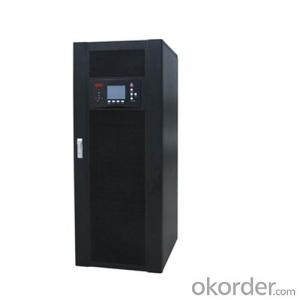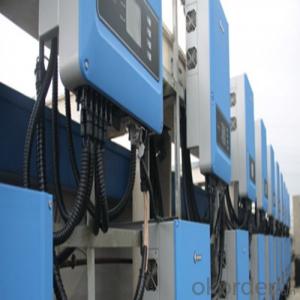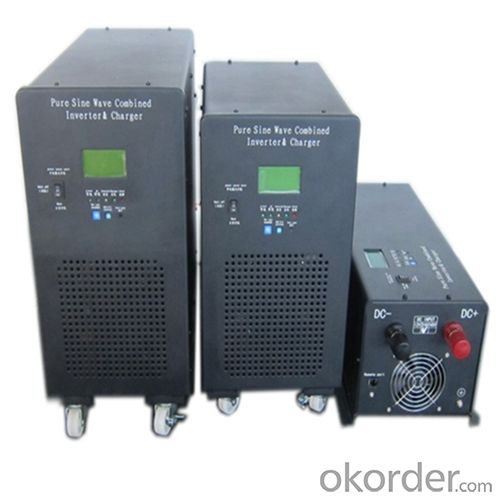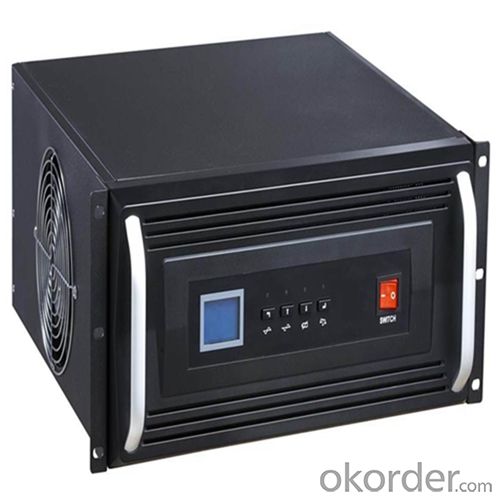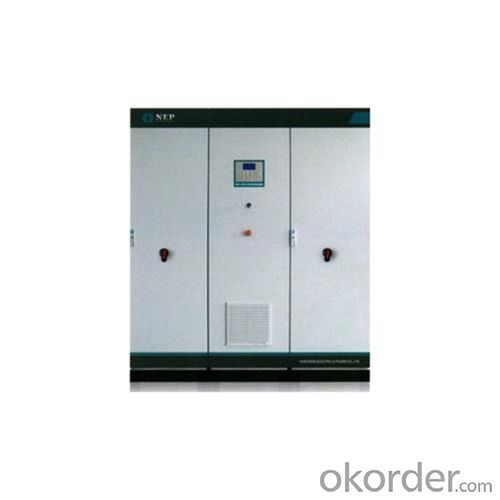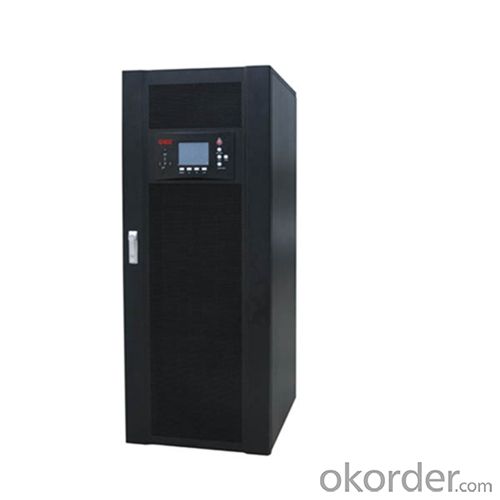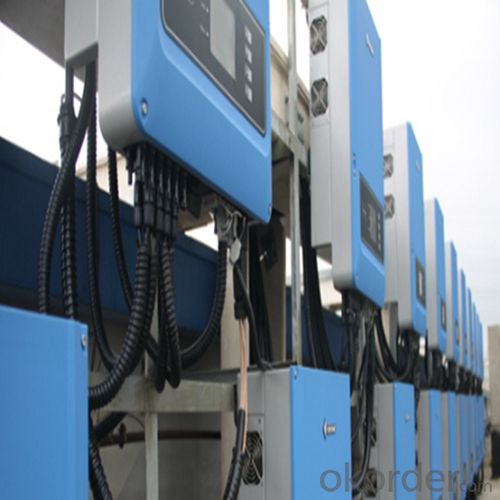600W Approved Solar Power Inverter MPPT Solar Charge Pure
- Loading Port:
- Shanghai
- Payment Terms:
- TT OR LC
- Min Order Qty:
- 5 pc
- Supply Capability:
- 3000 pc/month
OKorder Service Pledge
OKorder Financial Service
You Might Also Like
Performance Characteristics
· 1. Suitable for all electrical equipments
· 2. Large LCD display for more detailed content
· 3. CPU controlled; fast transfer time
· 4. Intelligent battery management, prolonging the service life of the battery
· 5. Complete protection function, high reliability
· 6. Can provide high current charge
· 7. Can match different types of batteries
· 8. Disassembled LCD box which can make the operation in a distance of 15 meters
Product introduction
EP series is sine wave low frequency inverter, which is specifically designed for home appliances. It is equipped with a big LCD screen so all information is displayed in detail, which makes it more convenient to use. Charging current of the inverter is adjustable from 5A to 45A and you can also select different charging voltage to charge different types of batteries so batteries are under great protection.
Our Service
Samples
Samples are Available for Testing and Market Test.
Warranty
We provides warranty against defects in materials and workmanship for its Uninterruptible power supply, Power inverter/chargers including inverter12v 24v 48V, Solar charge controllers (“Product”).
OEM Service
OEM service is strictly based on the ISO9001 ISO14001 quality assurance system. The TOP involves the effective teamwork of departments from Sales, R&D, and Engineering, purchasing, production & QA, assuring a high quality product and prompt delivery for customers. The standardization of our quality system and the quality stability has earned us the trust of our customers for 12 years.
We have 10 sets of automatic insertion equipments, ICT PCB testing equipments, ATE automatic testing center and aging workshop for all products. Monthly output of UPS series exceeds 200,000. We have been offering OEM service for over 12 years.
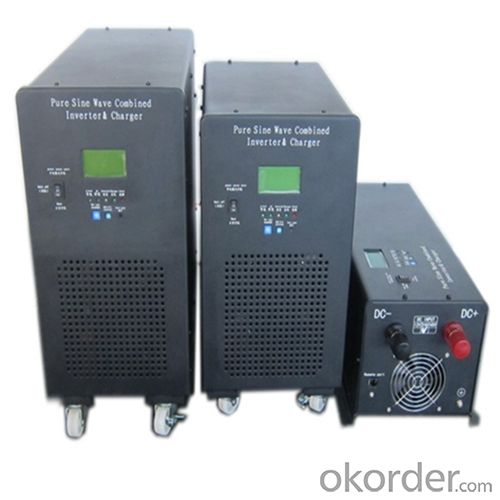
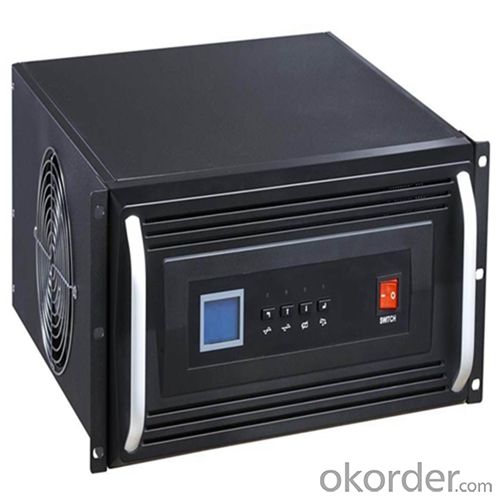
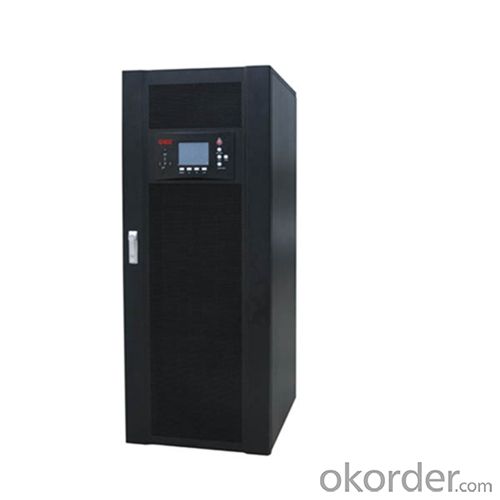
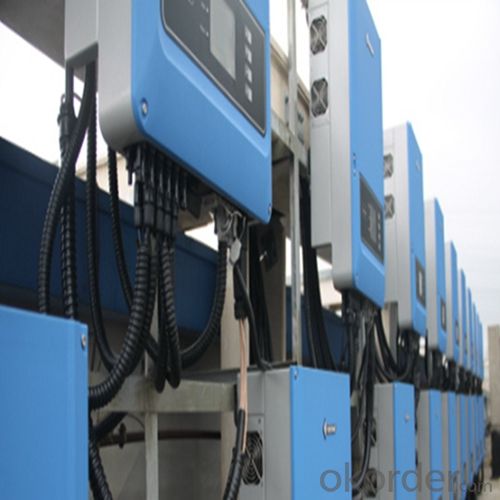
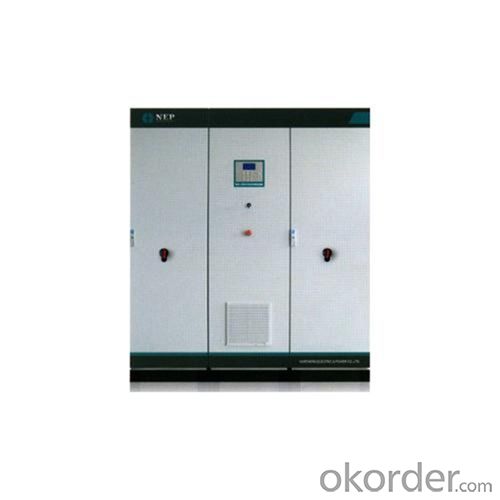
Specifications
Input | |
Input Voltage Range | 182-265VAC |
Output | |
Input Voltage Range | Batt.Mode:50±0.3Hz Mode:48-54Hz(50Hz) or 58-64Hz,Same as AC |
Output Wave Form | Sine Wave (Batt,mode) |
Transfer Time | 10ms(Typical) |
FAQ:
Q: Do you have the CE, TUV, UL Certification?
A: We’ve already passed all the tests, and any certificate is available.
Q: Have you ever sold your products to companies in my country?
A: Of course, we have customers in all general PV markets, but I think we should expand our market share along with the market growth.
Q: When did your company set up? You are a new company, how can I believe your quality?
A: We entered into Solar PV industry in 2005, now we have several plants in manufacturing of a-Si and c-Si panels, and our capacity is 220MW per year. Till now we have already passed all the tests by authorized laboratories, e.g. TUV, CE, UL.
Q: Can you help us install the module if we cooperate with you?
A: We haven’t entered into installation sector, but we have the plan in near future.
Q: How do you pack your products?
A: We have rich experience on how to pack the panels to make sure the safety on shipment when it arrives at the destination.
Q: Can you do OEM for us?
A: Yes, we can.
Q: Can we visit your factory?
A: Surely, I will arrange the trip basing on your business schedule.
- Q: Can a solar inverter be used with a backup power supply (UPS)?
- Yes, a solar inverter can be used with a backup power supply (UPS). The UPS can provide power during periods of low solar generation or in case of a grid outage, ensuring a continuous power supply.
- Q: What is the role of a data logger in a solar inverter?
- A data logger in a solar inverter is responsible for monitoring and recording important data related to the performance of the solar power system. It captures and stores information such as solar energy production, voltage levels, current flow, temperature, and other relevant metrics. This data is crucial for analyzing the efficiency and overall functioning of the solar inverter, as well as for identifying any potential issues or areas for improvement. Additionally, the data logger enables users to track the energy output and consumption, helping them make informed decisions about energy usage and potentially optimize their solar power system.
- Q: Can a solar inverter be used with different grid voltages or frequencies?
- No, a solar inverter cannot be used with different grid voltages or frequencies. Solar inverters are designed to convert the DC power generated by solar panels into AC power that matches the specific voltage and frequency of the local electrical grid. Using a solar inverter with different grid voltages or frequencies can lead to compatibility issues and may result in inefficient or malfunctioning operation of the system.
- Q: How does a solar inverter handle voltage sag and swell?
- A solar inverter handles voltage sag and swell by continuously monitoring the input voltage from the solar panels and adjusting its output voltage accordingly. In the case of voltage sag, when the input voltage drops below a certain threshold, the inverter boosts the voltage to maintain a stable output. Similarly, in the case of voltage swell, when the input voltage exceeds a certain limit, the inverter reduces the voltage to prevent any damage to the connected devices. This process ensures that the solar inverter consistently provides a steady and safe electrical supply.
- Q: Can a solar inverter be used with different battery chemistries?
- Yes, a solar inverter can be used with different battery chemistries as long as the inverter is compatible with the specific battery chemistry and its voltage requirements. However, it is important to ensure that the inverter is designed to work efficiently with the particular battery chemistry to avoid any compatibility issues or potential damage to the system.
- Q: What is the role of a galvanic isolation circuit in a solar inverter?
- The role of a galvanic isolation circuit in a solar inverter is to provide electrical safety by preventing the flow of direct current (DC) between the solar panels and the alternating current (AC) grid. It isolates the input and output sides of the inverter, protecting the user and the equipment from potential hazards such as electrical shocks and short circuits. Additionally, it helps in reducing noise and improving the overall performance and efficiency of the solar inverter system.
- Q: Can a solar inverter be connected to a computer or smartphone?
- Yes, a solar inverter can be connected to a computer or smartphone. Many modern solar inverters come with built-in Wi-Fi or Bluetooth capabilities that allow them to connect to these devices. Through dedicated mobile apps or software, users can monitor their solar system's performance, adjust settings, and receive real-time data and alerts directly on their computer or smartphone.
- Q: Generally a large grid-connected photovoltaic power plant will have several inverters
- The use of a high-power grid-connected inverter into the grid, the need for line design is relatively simple, because the DC and AC lines are separated, the use of convergence box to summarize, DC bus and then into the grid inverter
- Q: What is the role of a solar inverter in a solar-powered electric fence?
- The role of a solar inverter in a solar-powered electric fence is to convert the direct current (DC) generated by the solar panels into alternating current (AC) that is used to power the electric fence system. The inverter ensures that the energy captured by the solar panels is transformed into a usable form for the electric fence, allowing it to function efficiently.
- Q: How does a solar inverter handle voltage fluctuations?
- A solar inverter handles voltage fluctuations by continuously monitoring the incoming solar power and adjusting its output voltage accordingly. It uses advanced electronics and control algorithms to ensure that the output voltage remains stable and within a specified range, regardless of variations in the input voltage. This allows it to provide a consistent and safe supply of electricity to connected devices, even in the presence of voltage fluctuations.
Send your message to us
600W Approved Solar Power Inverter MPPT Solar Charge Pure
- Loading Port:
- Shanghai
- Payment Terms:
- TT OR LC
- Min Order Qty:
- 5 pc
- Supply Capability:
- 3000 pc/month
OKorder Service Pledge
OKorder Financial Service
Similar products
Hot products
Hot Searches
Related keywords



